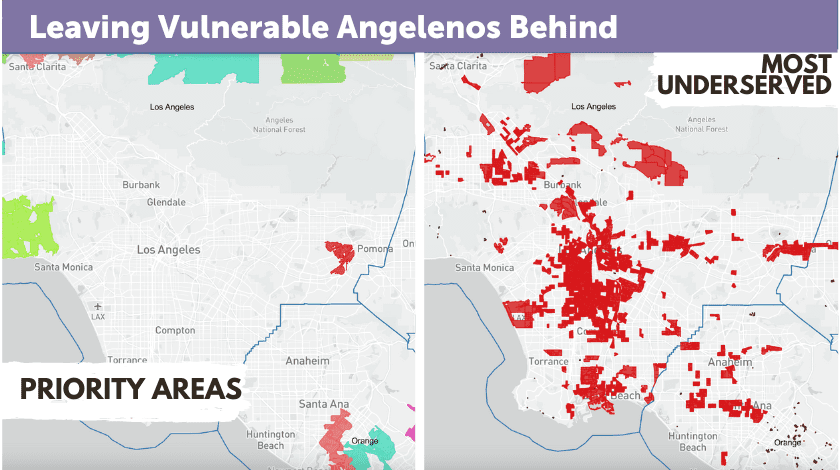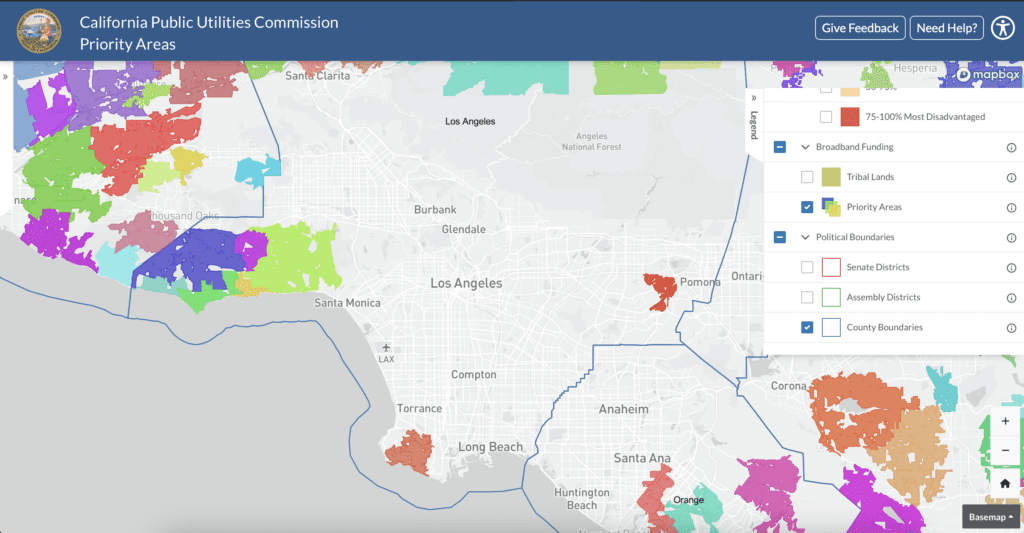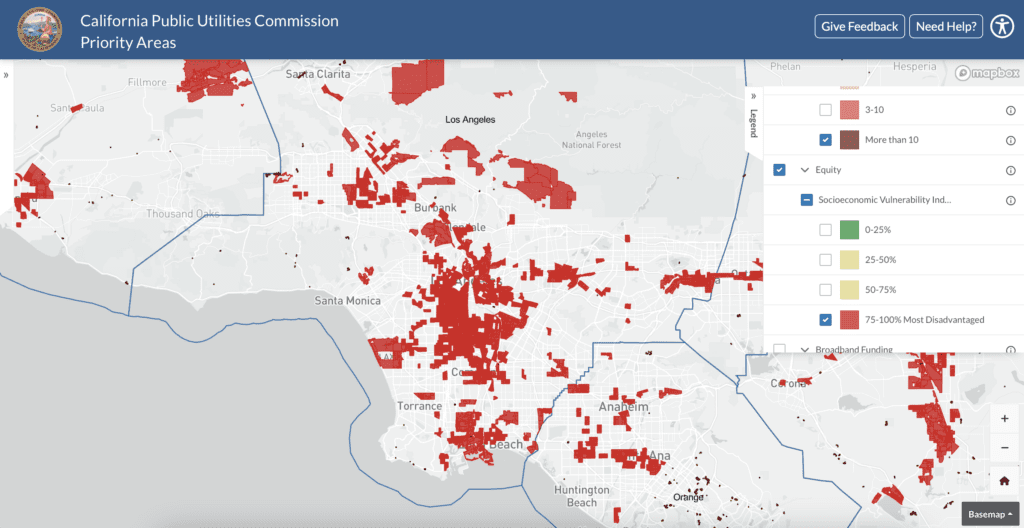To sign up for our newsletter, click here.
News and Announcements
Inaccurate CPUC Priority Area Maps Leave Vulnerable Angelenos Behind
Published Date
- March 14, 2023

By Cristal Mojica
With historic investments from the federal government for bridging the digital divide (including $42.45 billion from the IIJA BEAD Program and $2 billion allocated by SB 156) California has an immense opportunity—and responsibility—to build the critical broadband infrastructure needed to support the most vulnerable Angelenos.
In order to ensure that this once-in-a-generation infrastructure funding is allocated equitably, the California Public Utilities Commission (CPUC), the Federal Communications Commission (FCC), and the National Telecommunications and Information Administration (NTIA) must use mapping data that accurately reflects the challenges faced by our communities.
Unfortunately, the CPUC’s broadband funding priority areas maps, as initially drafted, failed to reflect the digital divide and the lived experiences of the communities most in need in Los Angeles County. As such, they risked denying Angelenos their fair share of this historic federal investment.
We were as alarmed by the glaring omission of our communities—including the entire city of Los Angeles, East Los Angeles, Southeast L.A., South L.A., most of the Northeast San Fernando Valley, and almost all of the San Gabriel Valley—as we were by inclusion of the affluent communities that have been deemed a priority. This startling contrast was illustrated for all who attended the Digital Equity L.A. Summit on Thursday, January 26th, 2023, where a breadth of Los Angeles advocates discussed the puzzling inclusion of Rancho Palos Verdes as a priority area—a community where the median household income exceeds $158,000—alongside the exclusion of South East L.A. in its entirety. This meant that the communities omitted from the priority area maps would receive less than their fair share when these broadband dollars are distributed.
Priority Areas

Most Underserved and Vulnerable Communities

Over the last month, we have come together with other community voices including California Community Foundation, CommonSense Media, and NextGen Policy, to highlight the need for the CPUC to go back to the drawing board, reconsider these priority areas and avoid once again leaving behind our Black and Brown communities.
Alongside our partners in the California Alliance for Digital Equity (CADE), we voiced support for the motion put forth by Supervisor Hilda Solis to have the Los Angeles Board of Supervisors write letters to the CPUC, NTIA, and FCC urging that this glaring inaccuracy be corrected.
In February, we also signed on to a letter urging our California Senators to press the FCC to correct the inaccuracies of the FCC maps—which have chronically omitted and undercounted public institutions and multi-family housing, where low-income and BIPOC families are more likely to live.
Thanks to equity advocates’ collective action, the CPUC recently responded and temporarily withdrew the priority areas map. New eligibility maps will be released at the end of March, with updated unserved location and disadvantaged communities data. The CPUC will also award points to applications for funding that indicate they will be serving disadvantaged communities.
However, our work is not over—we must continue to be vigilant. We call on our philanthropic partners, community organizations, and elected leaders to continue to step up to ensure that Angelenos who have repeatedly and intentionally been left out of private and public investment are not once again marginalized as a result of inaccurate mapping and misguided priority areas.
With NTIA planning to announce BEAD allocations by June 30th, let us continue to show up for our communities, and demonstrate to them that they are California’s priority— let us join forces to secure the allocation of infrastructure resources that our most vulnerable communities deserve.
Michelson 20MM is a private, nonprofit foundation seeking to accelerate progress towards a more just world through grantmaking, operating programs, and impact investing. Co-chaired and funded by Alya and Gary Michelson, Michelson 20MM is part of the Michelson Philanthropies network of foundations.